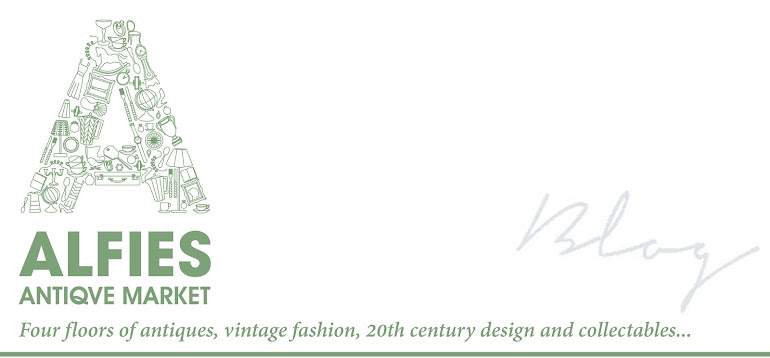The history of plastics is actually pretty amazing. I found this out on a visit to the
Tortoiseshell and horn are two naturally occuring plastics that were used before the invention of Bakelite.
Bakelite was the very first totally synthetic man-made plastic to be invented by Dr. Leo Baekeland in 1912. It was also the first thermosetting plastic, which meant that once an object was formed it could not be changed or re-melted. It was also heat-resistant and non conductive which was great as it allowed Bakelite to have a vast variety of uses and could be used for things that would get hot, such as ash trays and thermos flasks like these:
Classic 1950's Canadian Thermos jugs in brown bakelite and chrome from Robinson Antiques
Bakelite was perfect for making electrical items too, which lead to the first truly iconic bakelite design: the bakelite telephone.

Bakelite Telephone from Thirteen Interiors.
Radios and speakers were also made from Bakelite. These items are still popular and highly collectable today.

A fantastic 1920's Bakelite round mottled loud speaker by Philips. Circa 1927. From Ian Broughton.

One of the limitations of Bakelite, although some would argue against this was the limitations in colour. Bakelite items are dark and quite classical looking, and this matched the interiors of the time is was first produced but as times changed people wanted colour in their lives and when urea formaldehyde was produced successfully by the British Cyanides Co in 1928 things really got exciting.
With no limit to colour this new type of plastic was used in many household items, tableware, handbags, compacts, jewellery...the list is endless.

This fantastic late 1950s set (above) is by the famous costume jewellery design house Trifari. It is made from white Lucite, a thermoset plastic, and has matching necklace, bracelet and earrings.
This beautiful ‘Dorset Rex’ 1950s gold bag with a Lucite top and handle shows off a different use for this versatile plastic. Both the Trifari set above and the handbag can be found at Deborah Woolf Vintage.

Plastics are not only reserved for smaller items such as jewellery and tableware. Look at this chic Lucite table from Louise Verber Antiques. Made in the 1970s, notice the gilt finish on the three legs giving it that glam 70s cocktail vibe. I also really like this fun bright red 1970s umbrella stand from Francesca Martire (below).
As we all know too well the superb qualities of plastics and all the things we can do with them (from medicine and transport, to fashion and future technologies) there is always the downside. With the radical growth of a throwaway culture from around the 1960s onwards, it is only now we are realising and struggling to cope with the amount of this material e.g. plastic bags. Recycling is now at the forefront of everyone’s minds. Vintage finds are one of the ways we can reuse, recycle and remember the best qualities and designs of this amazing material.
1930 – Scotch tape invented.
1938 – First toothbrush with nylon tufts manufactured.
1948 – George de mistral invents Velcro.
1948 – Introduction of 12” long playing records made from PVC.
1957 – The hoop is reinvented as the Hula Hoop.
1959 – Mattel unveils the first Barbie Doll.
1969 – Neil Armstrong plants a nylon flag on the moon.






No comments:
Post a Comment